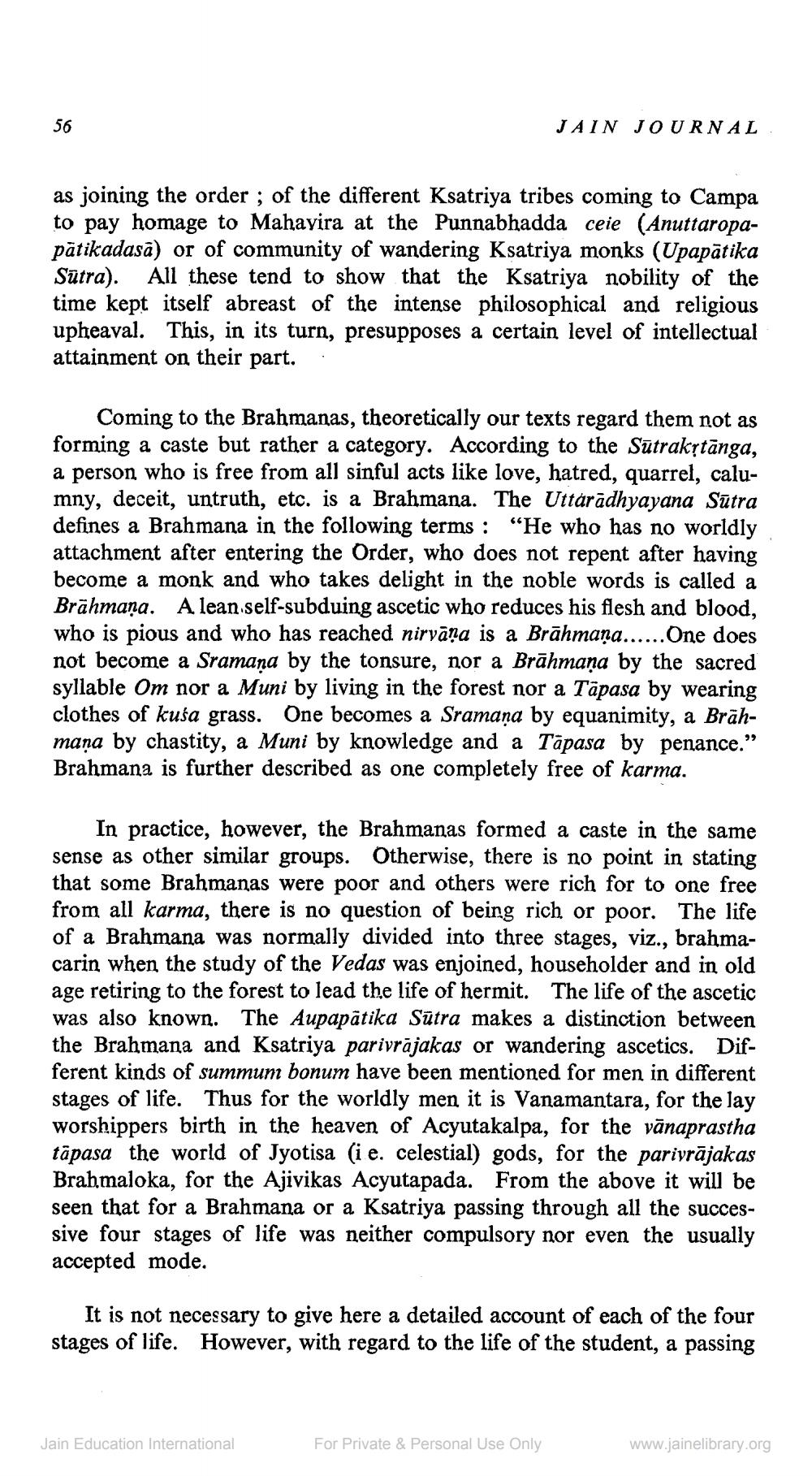________________
56
as joining the order; of the different Ksatriya tribes coming to Campa to pay homage to Mahavira at the Punnabhadda ceie (Anuttaropapatikadasā) or of community of wandering Ksatriya monks (Upapātika Sutra). All these tend to show that the Ksatriya nobility of the time kept itself abreast of the intense philosophical and religious upheaval. This, in its turn, presupposes a certain level of intellectual attainment on their part.
JAIN JOURNAL
Coming to the Brahmanas, theoretically our texts regard them not as forming a caste but rather a category. According to the Sutrakṛtānga, a person who is free from all sinful acts like love, hatred, quarrel, calumny, deceit, untruth, etc. is a Brahmana. The Uttaradhyayana Sutra defines a Brahmana in the following terms: "He who has no worldly attachment after entering the Order, who does not repent after having become a monk and who takes delight in the noble words is called a Brāhmaṇa. A lean self-subduing ascetic who reduces his flesh and blood, who is pious and who has reached nirvāṇa is a Brāhmaṇa......One does not become a Sramana by the tonsure, nor a Brāhmaṇa by the sacred syllable Om nor a Muni by living in the forest nor a Tapasa by wearing clothes of kusa grass. One becomes a Sramana by equanimity, a Brähmana by chastity, a Muni by knowledge and a Tapasa by penance." Brahmana is further described as one completely free of karma.
In practice, however, the Brahmanas formed a caste in the same sense as other similar groups. Otherwise, there is no point in stating that some Brahmanas were poor and others were rich for to one free from all karma, there is no question of being rich or poor. The life of a Brahmana was normally divided into three stages, viz., brahmacarin when the study of the Vedas was enjoined, householder and in old age retiring to the forest to lead the life of hermit. The life of the ascetic was also known. The Aupapātika Sūtra makes a distinction between the Brahmana and Ksatriya parivrājakas or wandering ascetics. Different kinds of summum bonum have been mentioned for men in different stages of life. Thus for the worldly men it is Vanamantara, for the lay worshippers birth in the heaven of Acyutakalpa, for the vanaprastha tāpasa the world of Jyotisa (i e. celestial) gods, for the parivrājakas Brahmaloka, for the Ajivikas Acyutapada. From the above it will be seen that for a Brahmana or a Ksatriya passing through all the successive four stages of life was neither compulsory nor even the usually accepted mode.
It is not necessary to give here a detailed account of each of the four stages of life. However, with regard to the life of the student, a passing
Jain Education International
For Private & Personal Use Only
www.jainelibrary.org




